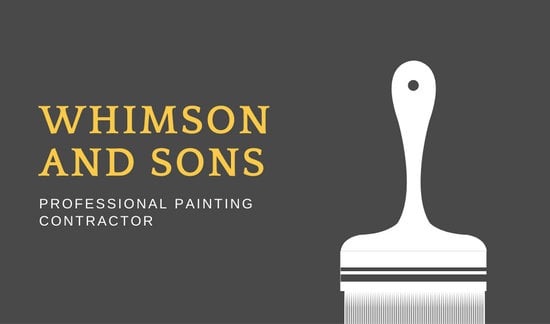Find Out How Seasonal Aspects Affect Business Exterior Paint Success And Find The Most Effective Times To Ensure Lasting Outcomes For Your Task
Find Out How Seasonal Aspects Affect Business Exterior Paint Success And Find The Most Effective Times To Ensure Lasting Outcomes For Your Task
Blog Article
Composed By-Korsholm Whalen
When you're planning a commercial external painting project, seasonal variables can make or break your outcomes. You'll intend to think about exactly how temperature and moisture effect paint application and drying out times. Picking the right period can guarantee your paint sticks correctly and lasts longer. But which periods are truly the most effective for this sort of work? Allow' straight line out the crucial elements that can affect your job's success.
The Effect of Temperature Level on Paint Application
When you're intending a business outside painting job, the temperature can significantly affect how well the paint sticks and dries out.
Ideally, you want to repaint when temperatures range in between 50 ° F and 85 ° F. If it's also cold, the paint may not treat correctly, resulting in problems like peeling off or splitting.
On the other hand, if it's also warm, the paint can dry also quickly, preventing proper adhesion and causing an unequal surface.
You ought to also take into consideration the time of day; morning or late afternoon supplies cooler temperatures, which can be a lot more beneficial.
Always examine the maker's referrals for the specific paint you're utilizing, as they frequently offer guidance on the optimal temperature variety for ideal results.
Moisture and Its Effect on Drying Times
Temperature isn't the only environmental factor that affects your commercial external paint job; moisture plays a substantial role also. professional painting minneapolis can decrease drying out times significantly, influencing the total quality of your paint work.
When the air is filled with wetness, the paint takes longer to treat, which can lead to concerns like inadequate bond and a higher threat of mildew growth. If you're repainting on a particularly damp day, be prepared for extended wait times between layers.
It's essential to monitor regional weather conditions and plan as necessary. Preferably, go for moisture levels in between 40% and 70% for ideal drying.
Keeping these factors in mind ensures your project remains on track and supplies a lasting coating.
Best Seasons for Commercial Exterior Painting Projects
What's the most effective season for your business exterior paint projects?
Springtime and early autumn are generally your best bets. Throughout these seasons, temperatures are moderate, and moisture levels are typically reduced, developing perfect problems for paint application and drying.
Stay clear of summer season's intense heat, which can cause paint to dry as well quickly, leading to poor bond and finish. Likewise, winter's cool temperatures can impede proper drying and curing, taking the chance of the longevity of your paint task.
Aim for days with temperature levels in between 50 ° F and 85 ° F for ideal results. Keep in mind to check the regional weather forecast for rainfall, as damp conditions can spoil your project.
Planning around these aspects guarantees your paint task runs efficiently and lasts longer.
Final thought
To conclude, intending your industrial outside paint projects around seasonal factors to consider can make a substantial distinction in the end result. By organizing job throughout the perfect temperature levels and humidity degrees, you'll make certain much better bond and drying times. Remember to keep house painters detroit on neighborhood weather forecasts and choose the right time of year-- springtime and early loss are your best options. Taking these actions will help you achieve a long lasting and professional surface that lasts.
